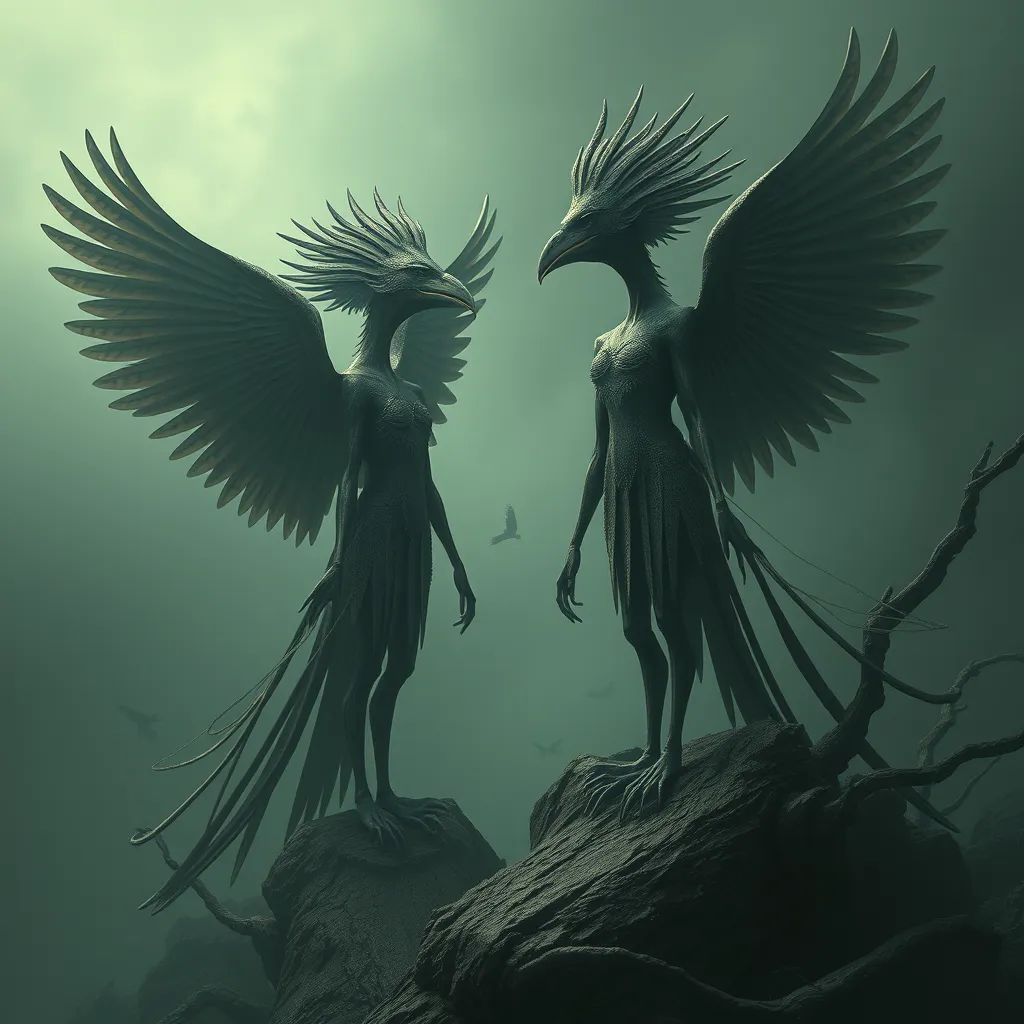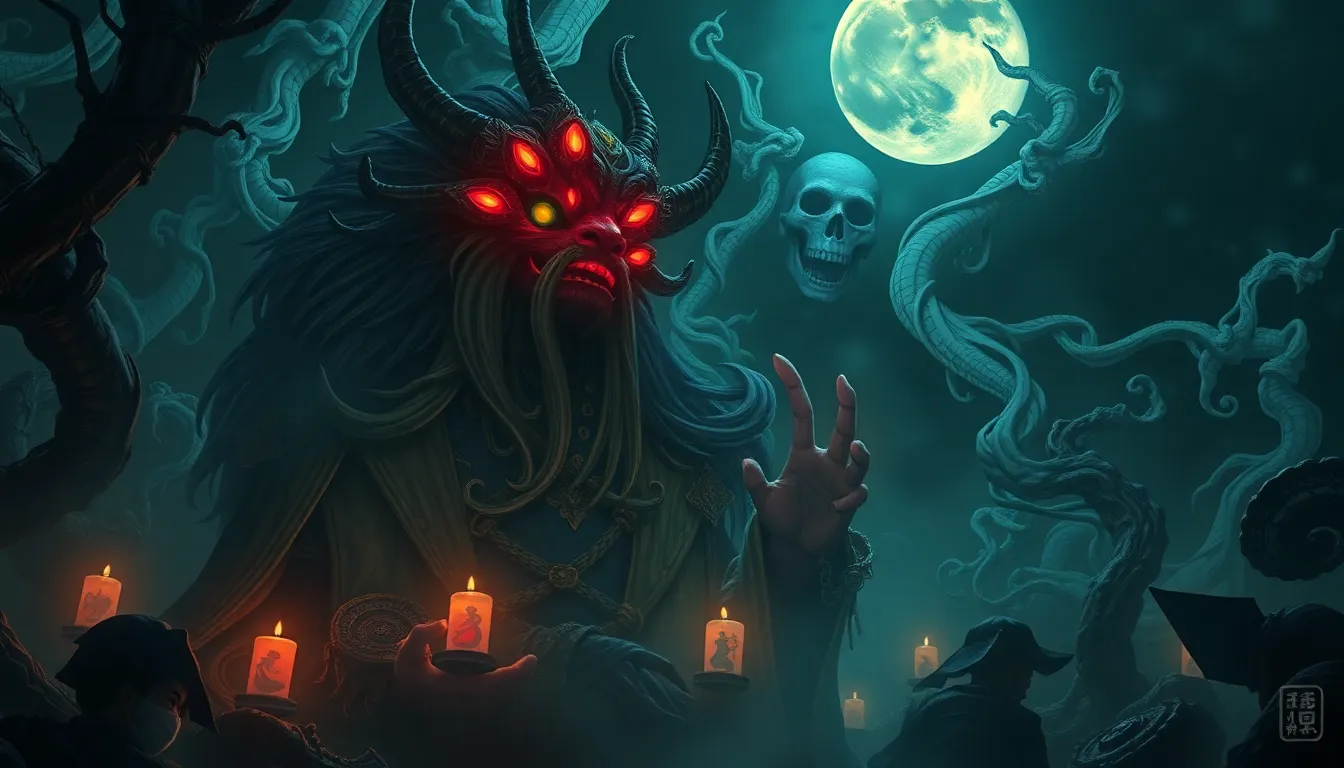The Manticore in Ethiopian Folklore: Guardian of the Lost City of Aksum
I. Introduction
Ethiopian folklore is a rich tapestry interwoven with tales that reflect the culture, history, and values of its people. These stories, passed down through generations, serve not only as entertainment but also as vessels of wisdom and cultural identity. Among the myriad of mythical creatures that populate Ethiopian folklore, the Manticore stands out as a compelling symbol of strength and vigilance.
The Manticore, a creature often depicted as a hybrid of a lion, a human, and a scorpion, embodies the duality of beauty and terror. It is not just a monster; it is a guardian of the sacred, especially associated with the fabled Lost City of Aksum, a place steeped in history and significance.
Aksum, once the capital of the Aksumite Empire, is renowned for its monumental obelisks and ancient ruins. Its historical importance as a center of trade and early Christianity in Africa cannot be overstated, making it a focal point of Ethiopian pride and heritage.
II. The Manticore: Origins and Description
A. Historical roots of the Manticore in various cultures
The Manticore has its roots in ancient Persian mythology, where it was described as a fearsome beast that devoured its victims whole. Over time, the Manticore myth spread to Greece and Rome, evolving in its representation and significance. In Ethiopian folklore, however, the Manticore takes on a unique character, deeply intertwined with the cultural narrative of the region.
B. Physical characteristics and attributes in Ethiopian folklore
In Ethiopian tales, the Manticore is often depicted with the body of a lion, the face of a man, and a tail that ends in a stinger akin to that of a scorpion. This fearsome creature is said to possess a loud roar, echoing like thunder, and its eyes are described as being both wise and terrifying. Its fierce nature is balanced by its role as a protector.
C. Symbolism and meanings attributed to the Manticore
The Manticore symbolizes not only physical strength and courage but also the protection of sacred spaces. It serves as a reminder of the dual nature of existence—beauty and terror coexist, and true strength lies in the ability to guard what is precious while facing one’s fears.
III. The Legend of Aksum: An Overview
A. Historical background of the Lost City of Aksum
Aksum was the heart of the Aksumite Empire, which thrived between the 1st and 7th centuries CE. Known for its monumental obelisks, the city was a hub of trade and a melting pot of cultures, connecting Africa, the Arabian Peninsula, and beyond. Its strategic location contributed to its rise as a powerful empire.
B. Cultural and architectural significance of Aksum
The architectural marvels of Aksum, including the famous stelae and the Church of St. Mary of Zion, hold immense cultural value. The obelisks, some towering over 20 meters, were believed to mark the graves of kings and serve as symbols of their power. These structures reflect the advanced engineering skills of the Aksumites and their deep spiritual beliefs.
C. Connection between Aksum and Ethiopian identity
Aksum is often regarded as the cradle of Ethiopian civilization. It is closely linked to the identity of the Ethiopian people, symbolizing their rich history, resilience, and faith. The legends surrounding Aksum and its guardians, like the Manticore, contribute to a collective memory that is vital to Ethiopian cultural pride.
IV. The Manticore as a Guardian
A. Role of the Manticore in protecting Aksum
In folklore, the Manticore is seen as the guardian of Aksum, protecting its sacred relics and treasures. Legends recount tales of the beast confronting intruders, showcasing its fierce loyalty to the city and its people. The Manticore’s presence is a reminder that the city is watched over by a powerful protector.
B. Legends of encounters between the Manticore and humans
Numerous stories tell of brave souls who sought to test their mettle against the Manticore, some seeking treasure while others aimed to prove their courage. While many met with defeat, a few were said to have earned the creature’s respect, leading to harmonious relationships between humans and the Manticore.
C. The Manticore as a symbol of strength and vigilance
The Manticore embodies the values of strength and vigilance within Ethiopian society. It serves as a metaphor for the necessity of safeguarding one’s heritage and identity against external threats, reminding people of their responsibility to protect their culture and history.
V. Cultural Significance of the Manticore in Ethiopian Society
A. The Manticore’s influence on art and literature
The Manticore’s striking imagery has inspired various forms of Ethiopian art, including paintings, sculptures, and textiles. Artists often depict the creature in vibrant colors, emphasizing its majestic yet fearsome nature, while poets weave its stories into their verses, capturing the essence of its guardianship.
B. The creature’s role in oral traditions and storytelling
In Ethiopian oral traditions, the Manticore features prominently as a tale told to instill bravery and a sense of heritage in children. Storytellers use the creature’s encounters with humans to teach moral lessons about courage, respect, and the importance of protecting one’s community.
C. Modern interpretations and representations of the Manticore
Today, the Manticore continues to inspire contemporary artists and writers, who reinterpret its legend in modern contexts. Graphic novels, films, and digital media explore its themes, ensuring that the Manticore remains a relevant symbol in Ethiopian culture.
VI. Comparative Analysis: The Manticore in Global Mythology
A. Similarities and differences with Manticores in other cultures
The Manticore’s representation varies across cultures. In Western mythology, it is often portrayed more as a monster, while in Ethiopian folklore, it assumes a protective role. This distinction highlights the adaptability of myths and their reflections of cultural values.
B. Influence of Ethiopian versions on broader mythological narratives
The Ethiopian version of the Manticore adds depth to the global narrative of this creature, emphasizing themes of guardianship and cultural pride. It has the potential to influence how Manticores are perceived in other cultures, enriching the collective understanding of this mythical being.
C. The significance of cross-cultural exchanges in folklore
Cross-cultural exchanges have allowed for the fusion of ideas and stories, creating a dynamic tapestry of folklore. The Manticore exemplifies how myths can evolve, reflecting the societies that tell them while also contributing to a shared human experience.
VII. The Legacy of the Manticore and Aksum Today
A. Preservation of the Manticore myth in contemporary Ethiopian culture
The legend of the Manticore continues to be preserved in Ethiopian culture through festivals, art, and literature. These cultural expressions serve as a means of keeping the story alive, ensuring that future generations understand the importance of their heritage.
B. Aksum’s status as a UNESCO World Heritage Site and its impact
Aksum’s designation as a UNESCO World Heritage Site has heightened awareness of its historical and cultural significance. This status not only helps to protect the ruins but also promotes tourism, allowing visitors to engage with the rich history of Ethiopia and its myths, including that of the Manticore.
C. The ongoing fascination with myths and legends in modern Ethiopia
As Ethiopia continues to evolve, the fascination with its myths and legends remains strong. The Manticore, as a symbol of strength and vigilance, represents the enduring spirit of the Ethiopian people, inspiring both pride and a sense of connection to their past.
VIII. Conclusion
In conclusion, the Manticore holds a significant place in Ethiopian folklore, serving as a guardian of the Lost City of Aksum and a symbol of cultural identity. Its rich history and the legends surrounding it underscore the importance of preserving cultural heritage in the face of modern challenges.
As we reflect on the Manticore’s significance, it is essential to appreciate the richness of Ethiopian mythology and history. By exploring these stories, we can foster a greater understanding and appreciation of the diverse cultures that shape our world.



